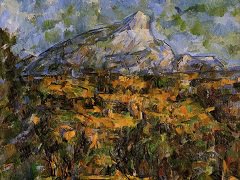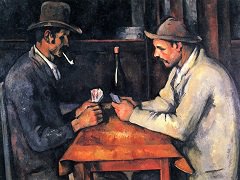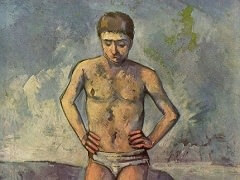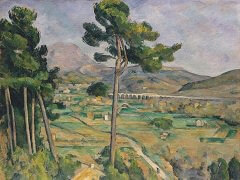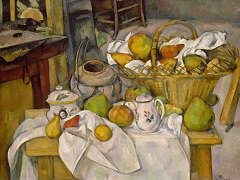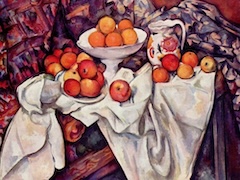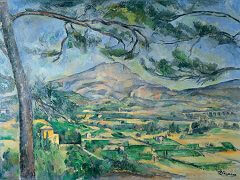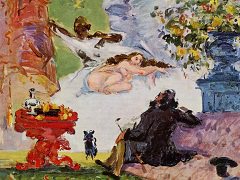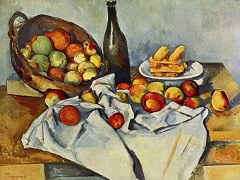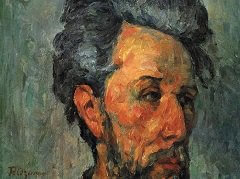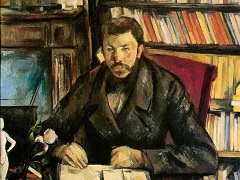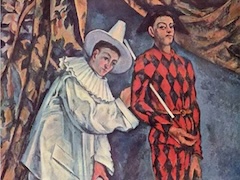Turning Road at Montgeroult, 1899 - by Paul Cezanne
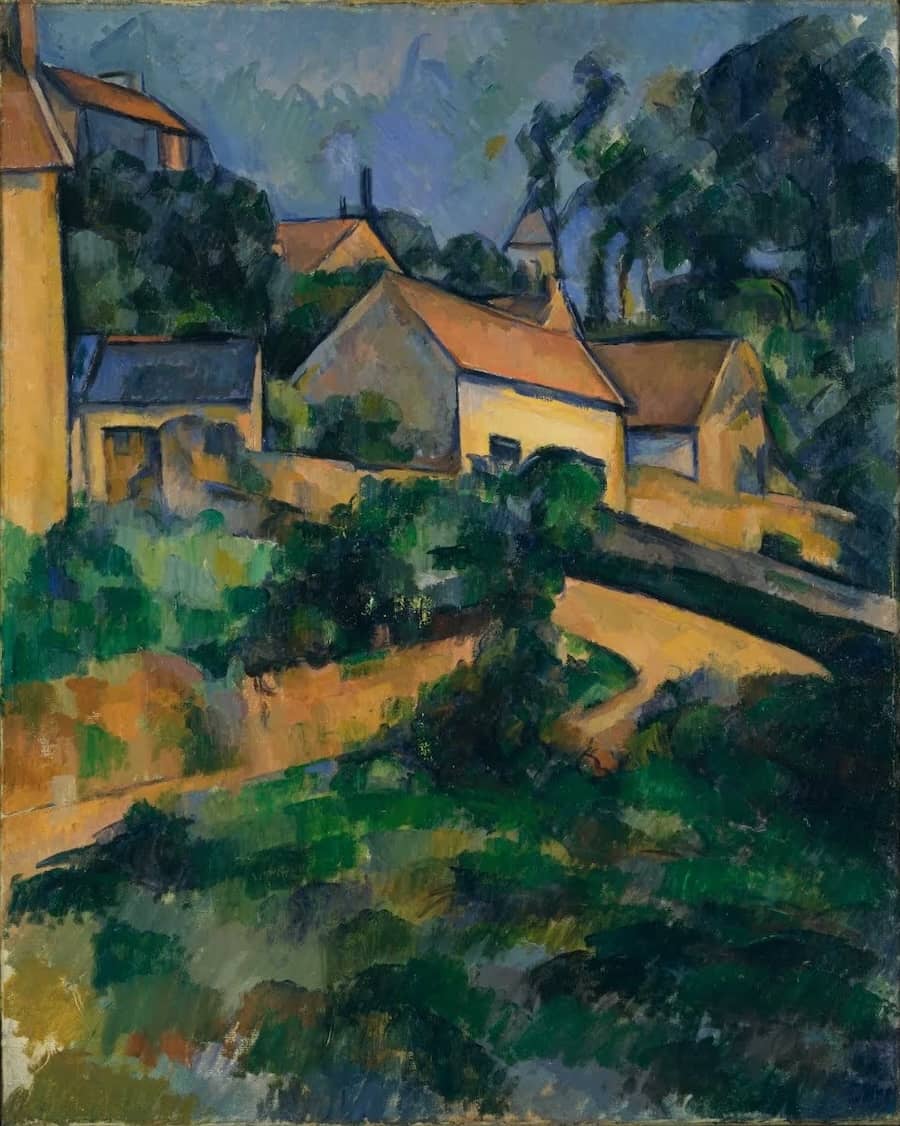
IT is an undistinguished subject, without a dominant or a central point of interest, yet is picturesque for modern eyes. The Romantics found the picturesque in the irregular, the roughly and oddly textured, the ruined, the shadowy and mysterious; the painters of the beginning of this century found picturesque the geometric intricately grouped, the disorder of regular elements, the decided thrust and counterthrust of close-packed lines and masses in the landscape. A scene like this one was fascinating to the artist as a problem of arrangement - how to extract an order from the maze of bulky forms. It is one aspect of the proto-Cubist in Cezanne.
Here the severely geometrical is crossed with the shapeless, pulsing organic, its true opposite. The yellow road, cutting through the foreground vegetation, carries the angular thrusts of the buildings into the region of growth. In contrast to the solid, illuminated substance of the thickly painted buildings, rendered with dark outlines, the bushes and trees rise among them in loose masses of thin, cool color. There are similar tones in the roofs and shaded walls, but these are strictly bounded by drawn lines, unlike the edges of the bushes and trees. To the bareness of the bright, hot surfaces of the houses is opposed the polychromy and more impulsive brushwork of the darker foreground.


